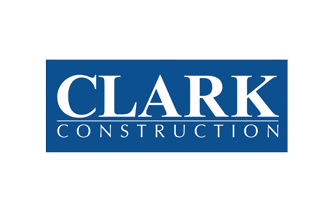Leveraging Training Programs to Attract Gen Z to Subcontractor Careers

Whether you call them Gen Z, Zennials, or some other nickname, the generation born between 1997 and 2012 is beginning to take their place in the workforce. Right now, at the beginning of 2021, the oldest members of this generation are in their mid-20s, and it’s safe to say they’re not kids anymore.
Right now, Gen Z is at the opposite end of the employment spectrum from the Baby Boomer generation, many of whom are reaching retirement age and leaving employment gaps that are becoming harder to fill. As a business owner or site supervisor looking to fill construction jobs, how can you leverage training programs to attract and retain Gen Z workers for subcontractor careers?
Be an alternative to student loans
In the United States right now, the average student loan debt is a whopping $32,731, with most borrowers owing more than $50,000.
Members of Gen Z may be considering skipping college altogether because, unlike the generation before them, raised on horror stories of not being able to succeed in life without a college degree, these new members of the workforce don’t want to start their adult lives buried in debt. They’ve watched older siblings or parents struggle with debt and don’t want to put themselves in the same position.
It’s easy to entice Gen Z into a construction career as a specialized subcontractor by appealing to that financial survival instinct they’ve honed throughout their young lives. Focus on the earn-while-you-learn style of training that promises both financial stability and the skills they’ll need to succeed in the future.
You don’t need a four-year degree for that, but with schools still focusing on college over trade, it might take some convincing. This is something that you can start to showcase for potential employees at trade shows or a career day showcasing jobs in construction. Prove that you can provide an alternative to student loans and the loose promise of the college degree with robust training and development opportunities.
Relate through near-peers
It’s challenging for Gen Z to relate to current construction or subcontractor crews, mostly because the latter belongs to the Boomer generation or Gen X — people who Zennials see as their parents or older siblings.
There is a distinct lack of younger employees in these industries, making it harder for curious high school graduates to picture themselves in a subcontracting career, or any construction job for that matter.
According to Gen Z-ers already in the industry, one way to answer this is to showcase their near-peers.
If you’re participating in a career day or trade show for a local high school, bring subcontractors from various specialties who are close to their age. Maybe they’ve only been on the job for a year or two, but no matter your age, it’s easier to picture yourself in a career if you see someone who looks like you, rather than someone who looks like your parent or grandparent.
For training programs, consider training those near-peers that we mentioned earlier as trainers or training assistants. The key is to make sure you’re not just using them as a mascot or a pretty face to put on the brochure. Potential Gen Z employees need to be able to see themselves in their trainers and the people they are striving to emulate.
Debunk the myths
Anyone who’s navigated a public education anywhere in the country has probably heard all sorts of negative things about becoming a specialized contractor. There are many myths surrounding subcontracting jobs and careers in construction, and many of them are perpetuated by the current public school system.
You may hear things like, “You can’t get a job out of trade school,” or “Trade school doesn’t guarantee financial stability and security.” Your training program needs to be able to debunk these myths.
Incorporate information from the Bureau of Labor Statistics (BLS) or your own experience. If a potential recruit is worried they won’t be able to obtain the financial security they desire, you can counter with facts.
The average annual salary for a general contractor is $92,500, which is more than twice the national average. Plumbers can make $52,590 a year, and carpenters bring home a median salary of $45,170. These are just a few examples. Collect a pocketful of trivia and facts, and you’ll find it easy to debunk those discouraging myths.
Tie technology and safety together
Every construction site and project, regardless of size, should be focused on safety — but there’s no reason why you can’t leverage safety training as a way to bring more Gen Z workers into the fold. This generation grew up — and is still growing up — in a world steeped in technology. This tech, and its various applications, will play an enormous role in their construction careers.
It can also be a valuable tool for the industry as a whole, which tends to lag behind when it comes to adopting new technologies.
Everything from safety to productivity can be linked together through technology. On sites that experience high temperatures, networked sensors on both equipment and employees can monitor job site temperatures, making it easier to keep the project safe without walking around with a thermometer in hand or a weather app on your phone.
Safety training is an integral part of new employee training and onboarding. Start by creating a comprehensive training program. With that foundation under your belt, you can start incorporating the sort of technology that will appeal to Gen Z employees and their technology-steeped existence.
Once it’s complete, make sure you’re advertising it. No one is going to apply for a job and take advantage of your now-impressive training program if they don’t know it exists.
Employ a variety of teaching methods
Contrary to what you might have experienced during your school career, not everyone learns the same way. Some people learn best in a classroom setting, while others learn best from video presentations or watching other people work. Others learn best from getting their hands dirty and gathering information and skills as they work.
In theory, you can learn anything by taking a class or filling out worksheets with a pen in your hand. But that isn’t always the best option if you want to build a skilled and talented team. Branch out and experiment with different teaching styles. Keep what works, get rid of what doesn’t, and build a training program that will help you entice members of Gen Z to seek out a construction job as a specialized subcontractor — and stick around to build a lifelong career.
This isn’t as easy to employ as some of the other options on this list, but it is worth the effort. Take the time to learn about the different ways that people learn. With that information on hand, it’s easier to take a closer look at your training programs and see how you can adapt them to cater to these different learning styles.
Consider audiobooks for auditory learners, video presentations for visual learners, and hands-on learning experiences for kinesthetic learners, just as a few examples. The exact details will vary depending on your exact specialty and the kind of training you offer.
Help them see a future
The biggest challenge with bringing Gen Z employees into a career as a subcontractor is potential concerns about stability. You need to help them see that this isn’t a field where they’re going to pop in for a year or two and then pop out again, but rather a stable environment where they can build the future they’re dreaming of.
Stability is the order of the day, but so are things like financial growth and continuing education. Gen Z isn’t trying to have things handed to them, regardless of what popular media might say. They’re more than willing to work for a living, but they’re not keen to waste their time on anything that doesn’t support that future.
Looking Forward
When they all finally reach the age of majority, Gen Z will make up more than 20% of the workforce. They might not have the numbers the Millennials had before them, but they will continue to shape the workforce for many years to come. Enticing them to consider a career in construction as a specialized subcontractor won’t be easy, but it’s possible with the right commitments to training and talent development.
If you found this content helpful or enjoyable and want to learn more, please check out the following blog posts.
- Trade School for Construction: Is This Thing Worth It?
- Sharpen Your Saw: Training Resources for Construction Pros
Rose Morrison is the managing editor of Renovated, where she covers contracting and residential construction topics. Check out her Twitter to see more of her work.

 Rose Morrison •
Rose Morrison • 
















